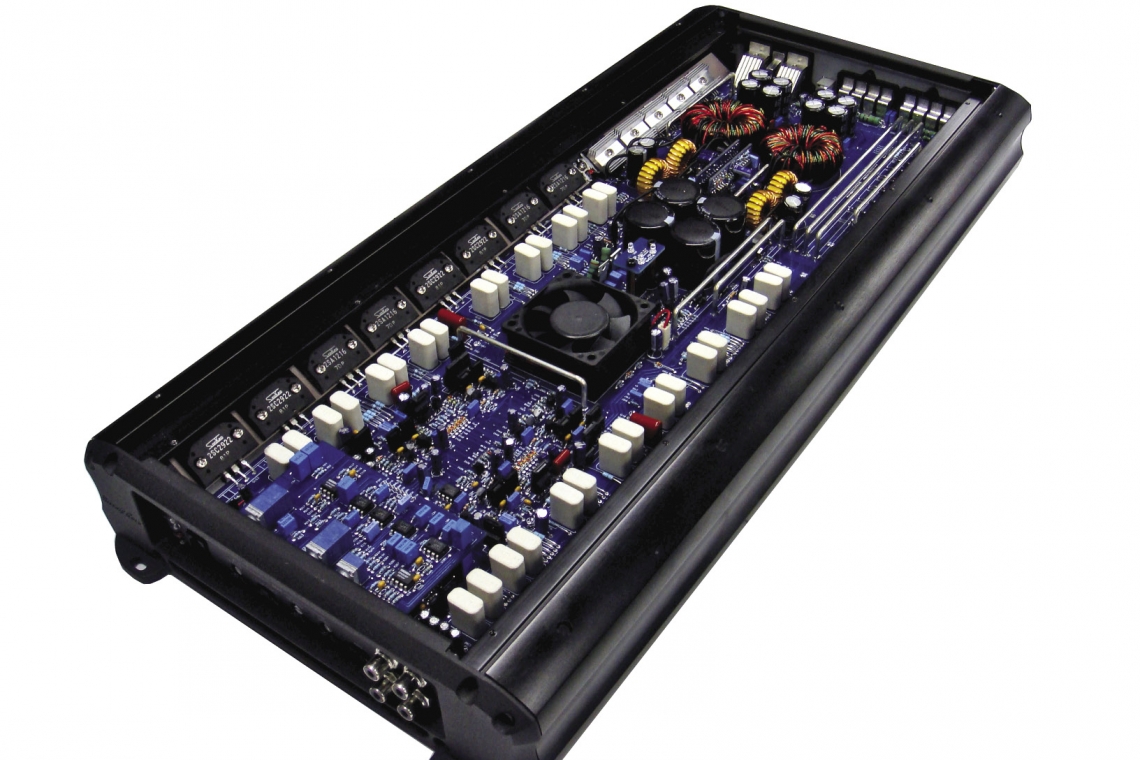I get lots of good-nature kidding about what some consider my fanatical attitude about good sound. I will go to what some consider ridiculous lengths to improve the performance of my systems. And, I know I'm not alone… the audiophiles are out there, lurking in the dim corners of audio showrooms where the esoteric gear is and no one dares come close with a MP3 player.
If you're the sort of person who still has more songs on vinyl and CD than you do on your computer and are always looking for ways to improve sound quality, the folks at Phoenix Gold are talking your language. The Elite series of amplifiers are just for us “audio fools.”
Phoenix Gold's Elite series of amplifiers consists of only three models, including a four-channel, two-channel as well as a mono version. The Elite amplifiers have been designed from the ground up to be the best-sounding, best-performing, highest-quality amplifiers Phoenix Gold has ever produced, so if you've been around as long as I have, you'll know this is no small feat.
The Elite amps represent state-of-the-art technology and design – and have very few compromises. They're designed to do one thing very well. That is, to reproduce your music as accurately and realistically as possible. These are not small amps. Nor are they high-efficiency amps. And, they certainly not inexpensive. Much like a Bentley or a Maybach, these are amps for people that want (and can afford) something a cut above the norm.
Now, let's take a close look at the Elite 4 model.
FEATURES
The Elite 4 is a four-channel, class AB bridgeable amplifier. The amplifier is large and heavy as a serious class AB amp should be. Measuring 23.3 x 10.5 x 2.6 inches, it's not likely to fit under your seat. The layout for connections and controls is fairly typical with all the delicate low-level signal input and control done at one end and the power, ground and speaker terminals at the other. This keeps the high-current, potentially-noisy circuits as far away from the sensitive input circuitry as possible. The amplifier is richly finished in black anodized brushed aluminum with a dark smoked Plexiglas top cover.
It can be used in four- or two-channel modes and comes with power ratings of 150 W x 4 into four ohms or 250 W x 4 into two ohms. It is equipped with high and low pass crossovers, which can be adjusted very precisely thanks to 41-position detented potentiometers. The high pass side adjusts from 24 Hz to 4.2 kHz while the low pass has a range of 36 Hz to 3.9 kHz. In the comprehensive owner's manual, there is a chart showing at which “click” each frequency is found. Also on the control end of the amp are clip lights for the front and rear channels, and a protection LED to let you know something is amiss. A three-position switch allows the user to turn the internal cooling fan off or automatically turn on as needed; or, to simply run all the time. A port for Phoenix Gold's optional RMD voltage display is also located on the control end of the amp.
But, it's inside this amp where are the real goodies are kept. Beginning with the ultra high-speed monolithic capacitors in the input stage to the cost-is-no-object Burr-Brown op-amps, which provide ultra low THD and greatly extended high frequency response, to the esoteric Sanken dual package output transistors, which are capable of switching full current at 40 MHz! These are the kinds of components you find in very high quality home audio gear. In fact, I know of several home audio brands that use these op-amps and the Sanken BJTs, none of which cost less than $15,000! But, a handful of expensive parts doesn't make a good amplifier. You also need skillful and experienced engineering and PCB layout and, one look inside the Elite 4 and you know this thing has been designed by someone that's been around the block a few times. Right there on the PCB it says “A Tribute to the Old School.”
Yes indeed. The output topology is based on a tried and true Triple Darlington arrangement. Even the supporting circuitry is symmetrically laid out and obviously done with great care and attention. To keep this massive amp and its 16 huge output devices cool, the heatsink has been specially designed to have about twice the mass of a conventional amplifier. The more I look around, the more impressed I am at the features I find, including dual power supplies with hand-wound toroids, heatsink-style clamps used to hold down the power supply FETs and low-ESR capacitors used in both the power supply and secondary (output)side. Because of the overkill in engineering, the Elite 4 will certainly drive one-ohm loads, but because of the reduced THD and overall better sound, serious sound quality people will generally stick to four-ohm loads (or two ohms at minimum). Don't buy this amp if all you want to do is drive one-ohm loads really loud. That would be like buying a Ferrari and using it as a landscaping truck.
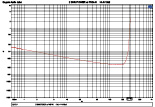 |
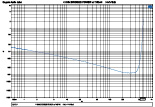 |
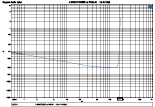 |
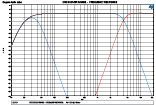 |
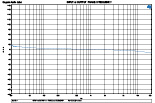 |
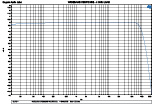 |
LISTENING
Before I make any measurements, I always prefer to listen to the product, and develop my own opinions on its sonic performance. Since it is brand new and is all about sound quality, I hook up the amp in my sound room and let it play at a low volume overnight. One could argue there is little to no reason to break-in an amplifier, but I do it anyway to give the big Elite 4 the best possible performance.
When morning comes, I'm eager to give it a serious listen with fresh ears. To say I'm impressed simply doesn't cover it. From a sonic perspective, the Elite 4 definitely makes my list of the best-sounding car audio amplifiers. The power seems effortless and the stereo image is simply fabulous. Bass is smooth, deep and well-controlled. The mid-range and top end is very open and transparent. Even the fan is quiet and will likely never be heard in a car, even if it were installed in the back seat area.
PERFORMANCE/BENCH MEASUREMENTS
On the test bench, the superlative sonics of the Elite 4 are validated by my bench measurements. THD at normal listening levels is in the 0.07% region – just like a very high-end home amp. Signal-to-noise is also good while the frequency response is an astounding 10 Hz to over 100 kHz. If you didn't think high-quality parts like those Burr-Brown op-mps and Sanken outputs make a difference, think again. Stereo separation is better than -50 dB and the amp turns on and off with nary a pop. Phase shift through the amp is also well above average and, definitely, contributes to the excellent stereo image. All of this greatness comes at a cost, however, as the amp does need almost 125 amps of current to make full two ohm power. If you use it at fourohms on all channels, the required current drops to a still significant 68 amps. And, you thought those 1/0 gauge connectors were just for show.
One more thing, if you are considering this amp or maybe you already have one, please don't use crappy copper-clad aluminum cables to power it. An amp of this quality deserves full-spec copper cables feeding it and to deliver the power to your speakers.
CONCLUSION
Okay, to be fair to its competitors, the Phoenix Gold Elite 4 is a large, expensive amplifier that needs a good electrical system to power it. But, this is a purpose-built, high-performance product that isn't about compromises or shortcuts. At $1299.99, buyers will be pretty serious about their system, and that's precisely who the Elite 4 is designed for. Are there better sounding amps out there? Sure, but not many of them operate on 12 volts and, of those that do, there certainly aren't many with the kind of over-built, in-your-face, old school “audio done right” attitude the Elite 4 brings to the table.
TECHNICAL DATA
The following power measurements have been obtained using industry standard methods (1 kHz @ 1.0% THD+N - Battery voltages shown +/- 0.2 V).
MEASURED PERFORMANCE SPECIFICATIONS
|
Manufacturers Rated Power |
Actual Measured Power @ 1.0% THD+N @ 12.6 V Battery |
Actual Measured Power @ 1.0% THD+N @ 14.4 V Battery |
|
150 W x 4 @ 4 ? |
131 W x 4 @ 4 ? |
172 W x 4 @ 4 ? |
|
250 W x 4 @ 2 ? |
221 W x 4 @ 2 ? |
290 W x 4 @ 2 ? |
|
500 W x 2 @ 4 ? |
448 W x 2 @ 4 ? |
587 W x 2 @ 4 ? |
|
Signal to Noise Ratio referenced to 2 V output. (CEA-2006A) (1 W @ 4 ?) |
-85.8 dBA |
|
Signal to Noise Ratio referenced to full output |
-108.2 dBA |
|
THD+N at rated 4 ? power |
0.021% |
|
CEA-2006A rated 4 ? power (minimum power per ch. developed over the entire intended audio bandwidth) |
152 W |
|
Maximum Efficiency at full 4 ? power per ch. |
69.6% |
|
Maximum Efficiency at full 2 ? power per ch. |
65.3% |
|
Efficiency at 10 W per ch. at 4 ? |
15.9% |
|
Idle Current |
1.5 A |
|
Input Sensitivity |
198 mV – 8.0 V |
|
Maximum Current at full power, lowest rated impedance |
124 A @ 2 ? |
|
Frequency Response (-3 dB) |
<10 Hz – 117.5 kHz |
|
High Pass Crossover |
20Hz – 4kHz -12 dB/Oct |
|
Low Pass Crossover |
40 Hz – 4 kHz -12 dB/Oct |
|
Subsonic Filter |
None |
|
Bass EQ boost |
None |
Related Articles
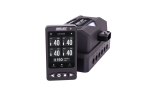 Air Lift Performance ALP4 - Next Level Air Suspension Management
Air Lift Performance ALP4 - Next Level Air Suspension Management
 Acura To Bring Back The RSX… Sort Of
Acura To Bring Back The RSX… Sort Of
 Metra to Show New Speaker Adapter Plates and Harnesses at SEMA 2024
Metra to Show New Speaker Adapter Plates and Harnesses at SEMA 2024
 KW Suspensions Coilovers for Ferrari Testarossa
KW Suspensions Coilovers for Ferrari Testarossa
 KW Suspensions V3 Coilovers for Hyundai Ioniq 5 N
KW Suspensions V3 Coilovers for Hyundai Ioniq 5 N
 KW Suspensions First Ever 1991-1998 (W140) S-Class Suspension
KW Suspensions First Ever 1991-1998 (W140) S-Class Suspension


